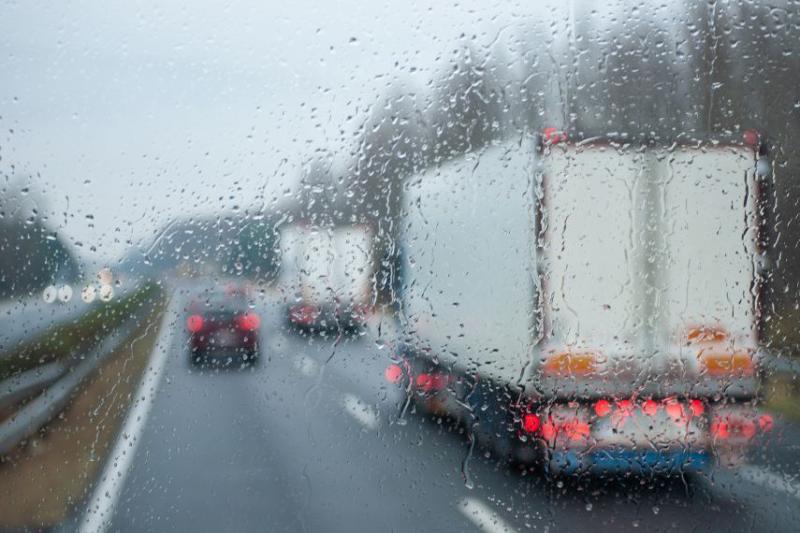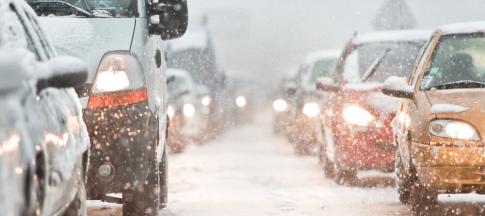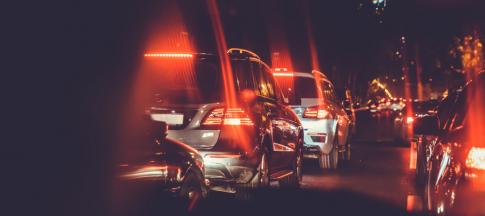
On average, the UK gets around 170 days of rain a year – that's a lot! When it comes to driving on one of these (many) rainy days, it’s important to be aware of the dangers and know how to stay safe.
Here are our top tips for driving in the rain.
How to prepare before you drive in the rain
Before you venture out in heavy rain, there’s a few things you should do to prepare:
- Check your wiper blades are working
- Have a look at your tyres’ pressure and tread
- Test your lights to make sure they’re all in order
- If you can, test your battery
Finally, remember to leave some extra time for your trip, as you’ll need to take it slow.
The dangers of driving in the rain
The reason driving in heavy rain can be dangerous is because the wet weather means there’s less grip on the road, plus it’s harder to see.
This brings with it the danger of hydroplaning, plus an increased chance of accidents. It’s especially dangerous to drive at night in these conditions.
How to drive safely in the rain
Ideally, you shouldn’t drive in really heavy rain at all. Keep an eye on weather warnings and if you can, delay your trip.
But if you do need to drive, here are our tips for staying safe.
Drive slow
This might seem obvious but take things nice and slow.
There’s less chance of you losing control or hydroplaning.
Leave extra stopping distance
The Highway Code says that you should at least double your stopping distances in wet weather, because your tyres lose their grip on the road.
So, it’s important you leave at least a four-second gap between you and the car in front.
Avoid floods and puddles
If you can’t tell if a puddle is too deep to drive through, it’s always best to avoid it completely and reroute.
If you are driving through one, keep your car in a low gear, your engine revs up, and take it slow.
Don’t use cruise control
Disable your cruise control when driving through heavy rain, as it’s important that you have complete control of your car.
Take care turning and braking
As your tyres’ grip on the road is reduced in the rain, make sure you’re careful when turning or braking. If you lose grip, you could spin out.
Take corners nice and slow and try not to brake too harshly.
Keep a good grip on the steering wheel
Heavy rain often brings windy weather too, so it’s important to keep a steady grip on the steering wheel.
Be aware of your surroundings
Be aware of cars around you, particularly if they make any sudden turns, as you could be sprayed with water which could reduce your visibility.
Depending on the circumstances, you may also need to turn on your dipped headlights so you can see the road ahead and be visible to other drivers.
If you feel like your windscreen is misting, turn on your air conditioning.
What do I do if I hydroplane?
Hydroplaning is when your tyres lose their grip on the road and you skate over the water instead. This can be extremely dangerous, as you lose the ability to steer or brake.
If you do hydroplane, remember:
- Hold the steering wheel steady – moving it dramatically one way or the other could make you spin out of control
- Don’t slam on the brakes – take your foot off the accelerator and let your car slow down slowly
- Keep it steady, but gently steer into the direction you’re skidding – this may help your tyres realign
- If you need to, take a moment – after you’ve regained control of your car, you may need to pull safely off the road and take a moment to breathe
Remember if you’ve hydroplaned that other cars might too, so be extra aware of your surroundings.
Should you drive if there are flood warnings?
No, driving is not recommended if there are flood warnings.
Keep an eye on local forecasts, as the Met Office and the Environment Agency have accurate and trusted information on predicted weather patterns.
Don’t attempt to drive through high water. It could put other motorists in danger, as just two feet of water can sweep a car away.
Don't assume your car will be safe to drive through a flooded area just because you see another car doing it.
If your area is flooded and your car is submerged, don’t try to start the engine.
What should I do with my car if there are flood warnings in place?
If possible, move your car to higher ground.
If you take a risk and drive your car into a flood, your insurance may not cover you for any damage caused.
Read our guide to flood damage and car insurance.
Does my policy cover me for water damage?
If you have a fully comprehensive policy, you may be able to claim for damage to your vehicle.
But as a customer it’s your responsibility to protect your car from loss or damage.
This includes avoiding unnecessary risks such as driving through a heavily flooded area.
Mechanical and electrical failures aren’t covered under your policy with us, so don't take the risk if you don’t have to drive.


